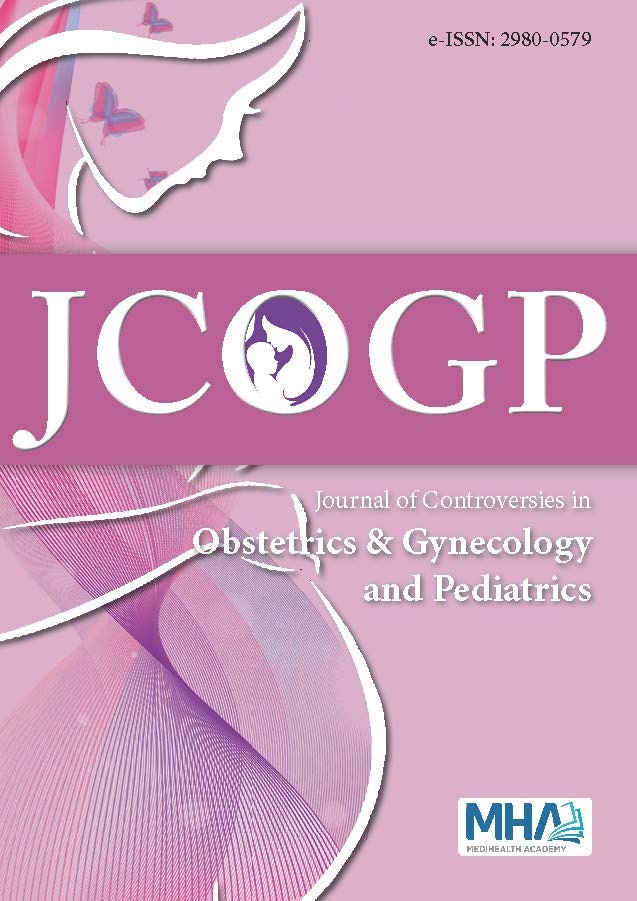1. 1. Whiteman MK, Hillis SD, Jamieson DJ, et al. Inpatient hysterectomysurveillance in the United States, 2000-2004.Am J Obstet Gynecol.2008;198(1):34.e1-34.e347. doi:10.1016/j.ajog.2007.05.039
2. 2. Lycke KD, Kahlert J, Damgaard R, Mogensen O, Hammer A. Trends inHysterectomy Incidence Rates During 2000-2015 in Denmark: Shiftingfrom Abdominal to Minimally Invasive Surgical Procedures.ClinEpidemiol. 2021;13:407-416. Published 2021 Jun 1. doi:10.2147/CLEP.S300394
3. 3. Baskett TF. Hysterectomy: evolution and trends.Best PractRes Clin Obstet Gynaecol. 2005;19(3):295-305. doi:10.1016/j.bpobgyn.2004.11.007
4. 4. Reich H. Laparoscopic hysterectomy.Surg Laparosc Endosc.1992;2(1):85-88.
5. 5. Nieboer TE, Johnson N, Lethaby A, et al. Surgical approach tohysterectomy for benign gynaecological disease.Cochrane Database SystRev. 2009;(3):CD003677. Published 2009 Jul 8. doi:10.1002/14651858.CD003677.pub4
6. 6. Jacoby VL, Autry A, Jacobson G, Domush R, Nakagawa S, JacobyA. Nationwide use of laparoscopic hysterectomy compared withabdominal and vaginal approaches.Obstet Gynecol. 2009;114(5):1041-1048. doi:10.1097/AOG.0b013e3181b9d222
7. 7. Committee Opinion No 701: Choosing the Route of Hysterectomy forBenign Disease.Obstet Gynecol. 2017;129(6):e155-e159. doi:10.1097/AOG.0000000000002112
8. 8. ACOG practice bulletin No. 104: antibiotic prophylaxis for gynecologicprocedures.Obstet Gynecol. 2009;113(5):1180-1189. doi:10.1097/AOG.0b013e3181a6d011
9. 9. Jones HW, Rock JA. Te Linde Operatif Jinekoloji. 11th ed. Demir SC,Tıraş MB, editors. Güneş Tıp Kitabevi 2017; 177-88.
10. 10. Mäkinen J, Johansson J, Tomás C, et al. Morbidity of 10 110hysterectomies by type of approach.Hum Reprod. 2001;16(7):1473-1478.doi:10.1093/humrep/16.7.1473
11. 11. Aarts JW, Nieboer TE, Johnson N, et al. Surgical approachto hysterectomy for benign gynaecological disease.CochraneDatabase Syst Rev. 2015;2015(8):CD003677. Published 2015 Aug 12.doi:10.1002/14651858.CD003677.pub5
12. 12. Gilmour DT, Dwyer PL, Carey MP. Lower urinary tract injuryduring gynecologic surgery and its detection by intraoperativecystoscopy.Obstet Gynecol. 1999;94(5 Pt 2):883-889. doi:10.1016/s0029-7844(99)00456-1
13. 13. Jacoby VL, Autry A, Jacobson G, Domush R, Nakagawa S, JacobyA. Nationwide use of laparoscopic hysterectomy compared withabdominal and vaginal approaches.Obstet Gynecol. 2009;114(5):1041-1048. doi:10.1097/AOG.0b013e3181b9d222
14. 14. Wright JD, Herzog TJ, Tsui J, et al. Nationwide trends in theperformance of inpatient hysterectomy in the United States.ObstetGynecol. 2013;122(2 Pt 1):233-241. doi:10.1097/AOG.0b013e318299a6cf
15. 15. Asante A, Whiteman MK, Kulkarni A, Cox S, Marchbanks PA,Jamieson DJ. Elective oophorectomy in the United States: trends andin-hospital complications, 1998-2006.Obstet Gynecol. 2010;116(5):1088-1095. doi:10.1097/AOG.0b013e3181f5ec9d
16. 16. Clarke-Pearson DL, Geller EJ. Complications of hysterectomy.ObstetGynecol. 2013;121(3):654-673. doi:10.1097/AOG.0b013e3182841594
17. 17. Gokmen Karasu AF, Ates S, Gurbuz T, Sahin N, Takmaz T, Aydin S.“A Clinico-Pathological Study of Transvaginal Endometrial ThicknessMeasurement in Asymptomatic Postmenopausal Patients and PatientsWith Postmenopausal Bleeding”.Gynecol Obstet Reprod Med. 2019;25(2): 85-88. doi:10.21613/GORM.2018.851.
18. 18. Cole P, Berlin J. Elective hysterectomy.Am J Obstet Gynecol.1977;129(2):117-123. doi:10.1016/0002-9378(77)90730-x
19. 19. Maresh MJ, Metcalfe MA, McPherson K, et al. The VALUE nationalhysterectomy study: description of the patients and their surgery.BJOG.2002;109(3):302-312. doi:10.1111/j.1471-0528.2002.01282.x

